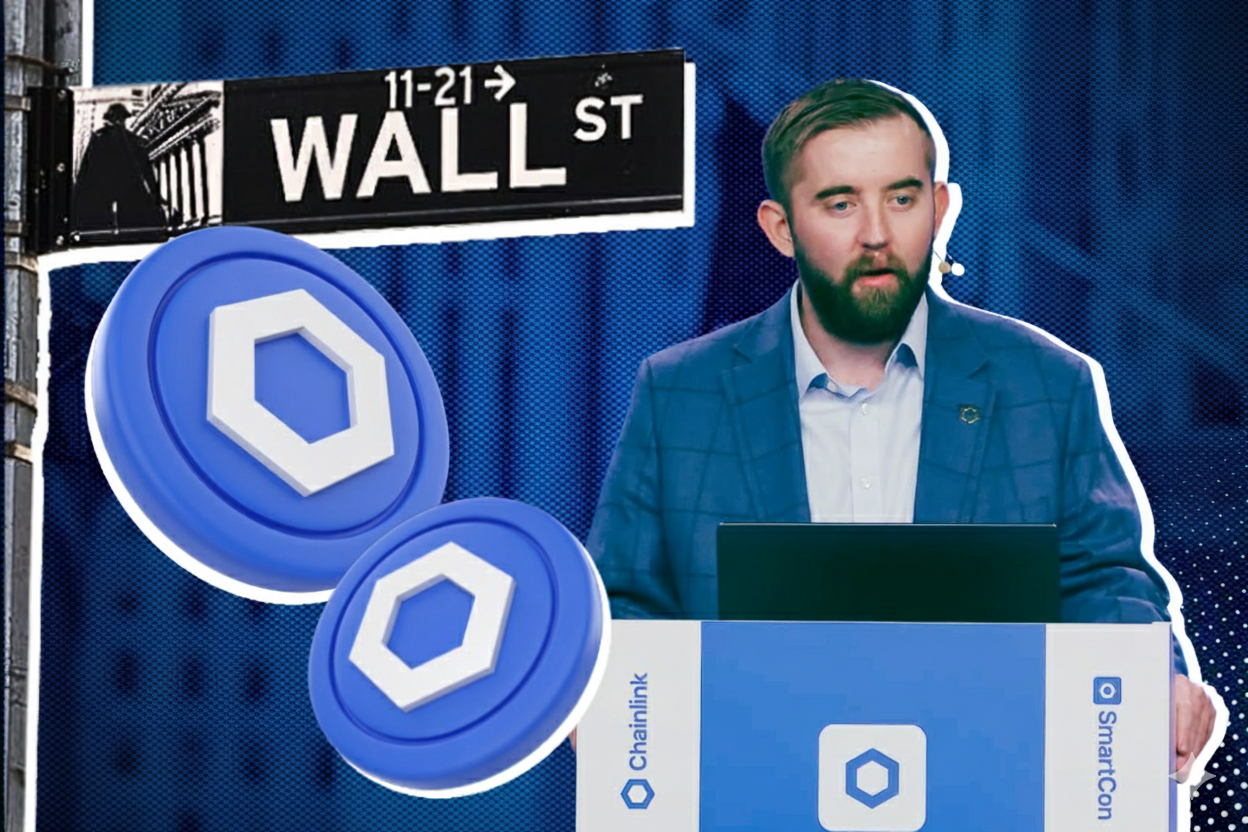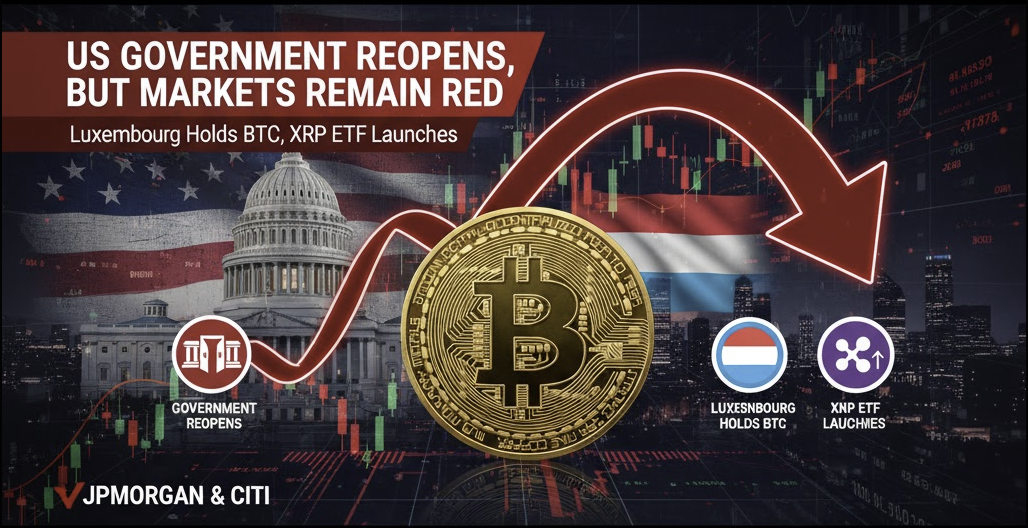Bonding Curves are becoming Binance's new strategic weapon in the liquidity race against rivals like Hyperliquid, offering early profit opportunities while simultaneously carrying FOMO and price collapse risks. Understanding this mechanism is crucial to avoid being the last one "holding the bag."
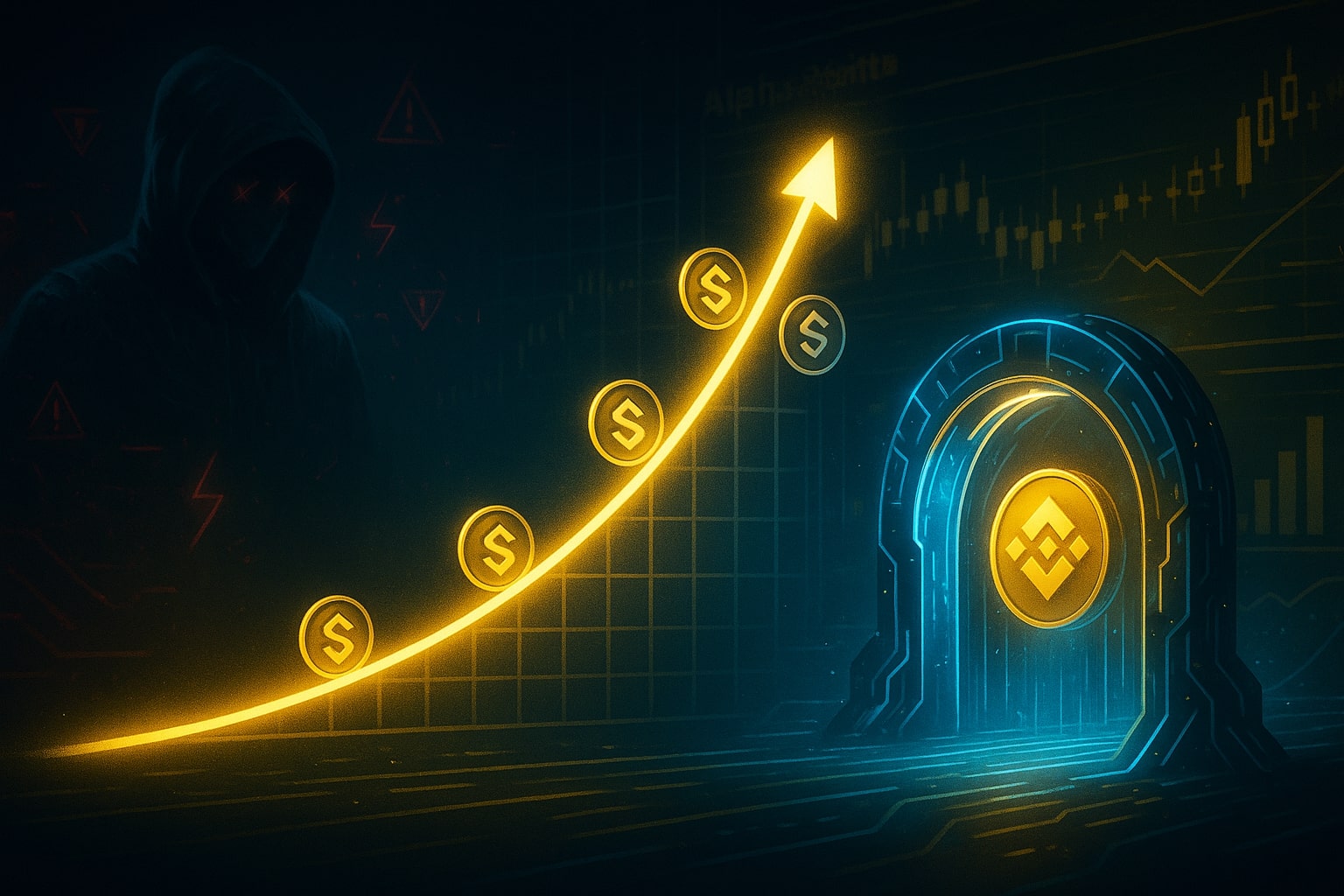
What Are Bonding Curves? Understanding Popular Types
A Bonding Curve is a dynamic pricing mechanism for tokens that uses a mathematical formula to directly link a token's price to its circulating supply. In essence, a Bonding Curve is programmed into a smart contract, allowing the token's price to automatically increase when someone buys (supply increases) and decrease when someone sells (supply decreases).
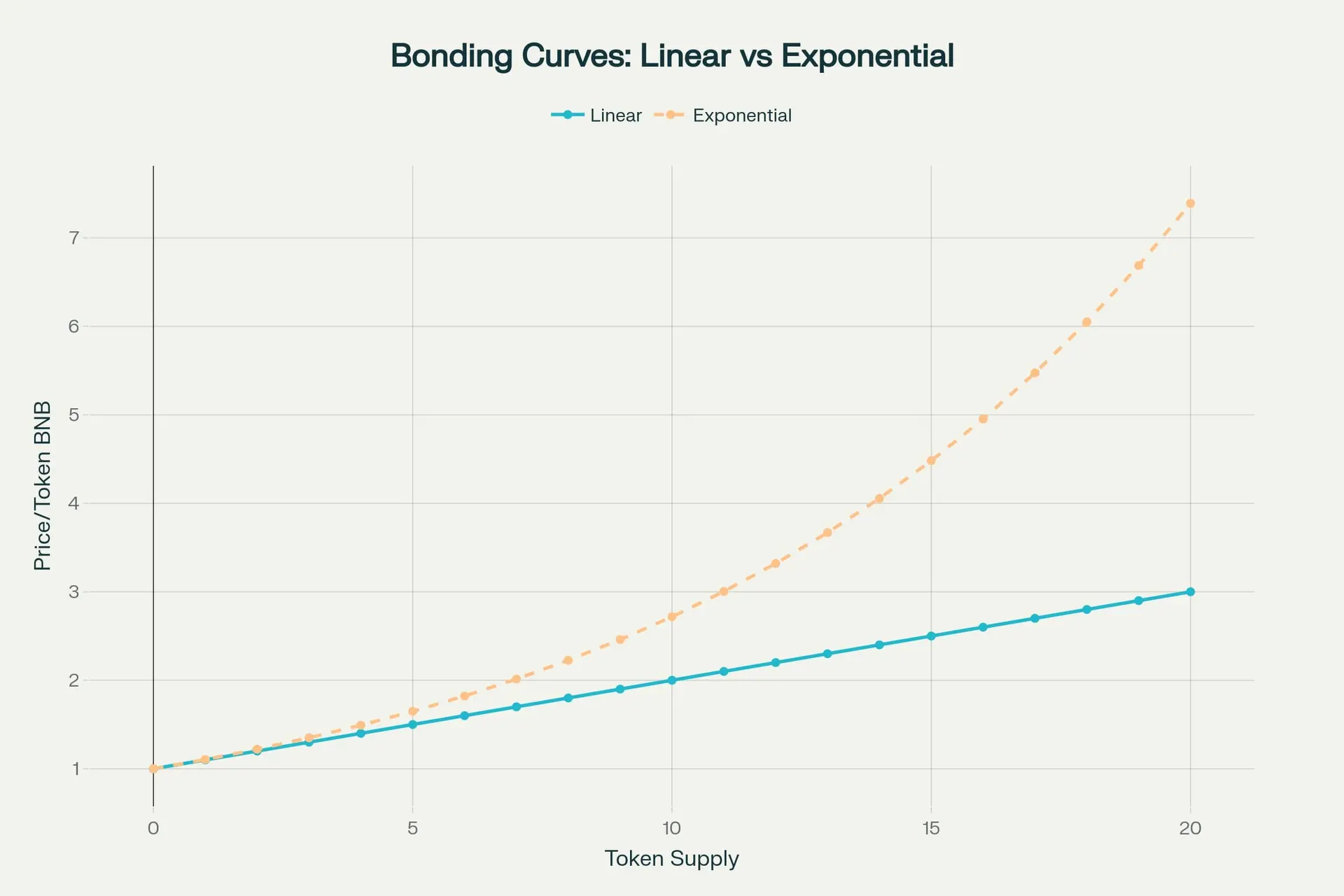
The strength of this mechanism lies in creating continuous liquidity: users can buy/sell tokens at any time because the smart contract is always ready to mint or burn tokens according to the established curve. Bonding Curves are fundamentally a form of primary AMM (Automated Market Maker), completely replacing the role of traditional order books and market makers during early listing stages.
Bonding Curve: Linear vs. Exponential. Source: Binance Academy
There are various types of Bonding Curves, with the two most common being linear and exponential.
- Linear Bonding Curve: The token's price increases at a fixed rate each time the supply increases. Each additional token minted raises the price by a specific amount. For example, if a token starts at 1 BNB, each newly minted token adds 0.1 BNB to the price. The first buyer pays 1 BNB, the second pays 1.1 BNB, the third 1.2 BNB, and so on. This model ensures a gradual, predictable price increase, suitable for projects needing to attract early participants without causing severe volatility.
- Exponential Bonding Curve: The token's price increases exponentially as supply grows, meaning the rate of price increase accelerates over time. Early stages offer a low price to encourage early buyers, but later on, the price surges rapidly with increased buying. For example, if a token starts at 1 BNB, the second token might cost around 1.105 BNB, and the third 1.221 BNB. This model offers high profits for early buyers but comes with high risk. If the price crashes suddenly, late buyers can get stuck with very high prices.
Regardless of the type, the common characteristic of a Bonding Curve is that it favors early participants. Early buyers typically get the lowest price and can sell at a higher price when demand increases. The entire process is transparent and predictable, not entirely dependent on fragmented market orders like traditional order book models.
A notable example is Pump.fun on Solana. This platform allows anyone to create meme coins and sell them according to a pre-programmed Bonding Curve in a smart contract, instantly locking 80% of the supply into liquidity on the curve without needing manual liquidity provision. In just a few months, Pump.fun processed over 11 million tokens, generating over $800 million in trading fees, demonstrating the potential of automating liquidity and token pricing using the Bonding Curve model.
How Binance Implements Bonding Curves in Binance Alpha TGE
Binance Alpha, launched in late 2024, is positioned as a "waiting room" for promising tokens before their official listing on the exchange. Here, users can buy Alpha tokens and accumulate Alpha Points—a reward system that assesses user activity level, serving as a condition for participating in exclusive airdrops and TGEs (Token Generation Events).
To enhance Binance Alpha's appeal, in mid-July 2025, Binance partnered with launchpad Four.meme to implement a TGE model based on a Bonding Curve directly within Binance Wallet. The goal of this model is to provide early liquidity, price tokens according to market demand instead of a fixed price, and differentiate itself from traditional ICOs/IEOs.
Bonding Curve TGE Mechanism on Binance Alpha
During the TGE event, eligible users (e.g., with 211 Alpha Points) will use BNB to subscribe to new tokens via the event page on Binance Wallet. The token price is not fixed but gradually increases along a pre-set curve. The more buyers, the higher the token price.
A key difference of the Bonding Curve on Binance Alpha is that tokens are allowed to be traded immediately within the TGE session. Early buyers can sell tokens to later participants via the Bonding Curve smart contract during the event, creating an internal market during the TGE period. This provides early liquidity for the token before its official listing. Late buyers still have the opportunity to participate if earlier buyers sell out, rather than a "hard close" like an IEO.
Four Phases of Binance Alpha's Bonding Curve TGE
- Phase 1 – Submission: Users place buy orders using BNB on a first-come, first-served basis. The starting price is low and increases gradually along the curve with each new filled order. Buy orders cannot be canceled, and BNB is locked throughout the event.
- Phase 2 – Dynamic Fulfillment: When total purchases reach a temporary threshold, users can still place orders. Orders will only be filled when others sell tokens back into the session, maintaining event continuity even if the token supply is temporarily "sold out."
- Phase 3 – Countdown & End: The TGE occurs within a fixed timeframe. When the time expires, Binance stops accepting new orders and refunds BNB for any unfilled or excess orders. The final token price is determined at the stopping point on the curve.
- Phase 4 – Unlock & Trading on Alpha: Tokens are unlocked and become transferable. Binance lists the token in the Binance Alpha area, allowing users to trade freely, usually against USDT or BNB. The starting price will be the TGE's final price.
Why Binance Adopted This Model
Requiring users to hold Alpha Points helps Binance filter out bots and ensure participants are genuinely active within the ecosystem. Simultaneously, using BNB as the payment method in TGEs boosts demand for BNB holdings, indirectly supporting the Binance ecosystem. Users also feel compelled to "participate early" to avoid missing out on a transparently priced TGE event with immediate token tradability.
A prime case study is the Hyperion (RION) project. This DEX on Aptos became the first project to trial a Bonding Curve TGE on Binance Alpha on July 16, 2025. The event lasted 2 hours and was exclusive to users with sufficient Alpha Points. Early buyers were able to sell tokens directly within the session to later buyers as the price rapidly increased along the curve, creating a strong FOMO effect. Some users reportedly spent up to $300 to acquire tokens worth $315.
After the TGE, RION was listed on Binance Alpha, officially trading freely with a starting price reflecting real demand. This was a crucial test for Binance to explore the Bonding Curve model before expanding it to meme coins or new SocialFi and gaming projects.
Benefits for Binance Alpha Users Participating in Bonding Curves
- Early Liquidity Before Listing: Unlike ICOs/IDOs that require investors to wait for listing to trade, Bonding Curve TGEs on Binance Alpha allow users to buy and sell tokens within the TGE session. Tokens can be traded immediately, opening up opportunities for early "flipping" if users buy at a low price at the start of the event and sell when the price increases.
- Quick Capital Turnover: Each Bonding Curve TGE typically lasts only a few hours, meaning committed BNB is locked for a very short period. If a buy order isn't fully filled, any excess BNB is refunded immediately after the event ends.
- Significant Early Profits: If a project generates strong community interest, the FOMO effect can rapidly push prices up during the TGE session. Many meme coin tokens launched via Bonding Curves have seen price increases of tens of times in short periods due to community hype.
- Fair and Transparent Pricing: Thanks to the automated price increase mechanism based on a public formula, Bonding Curves eliminate the scenario of "whales" buying up all allocations at a low price and then dumping them upon listing. Anyone can calculate the purchase price based on their entry time, avoiding the ambiguity often found in auctions or waiting for listings.
- More Participation Opportunities, Prioritizing Loyal Users: Bonding Curves allow early buyers to sell tokens during the TGE session, creating entry points for latecomers even if initial token allocations are exhausted, rather than a hard limit of "sold out and done." At the same time, the requirement for high Alpha Points to qualify for TGE participation ensures priority for loyal users, limiting bots and "ticket hunters."
Risks of Participating in Bonding Curves on Binance Alpha
While promising, Bonding Curves on Binance Alpha carry notable risks:
- FOMO and Buying the Top: The Bonding Curve incentivizes early purchases at low prices. However, when prices rise rapidly without a "braking mechanism," the fear of missing out (FOMO) can easily lead latecomers to buy at high prices just before demand subsides. If demand suddenly drops, the price can plummet as quickly as it rose, causing significant losses for late buyers within minutes.
- Uncertain Post-TGE Liquidity: During the TGE session, the smart contract ensures users can buy and sell according to the curve. However, after the event, the token might experience low trading activity and wide price spreads, leaving holders potentially stuck if the project fails to attract a sustained community.
- Temporary Capital Lockup: When placing a buy order, BNB is locked throughout the TGE session and cannot be canceled midway. This creates a risk of being "unable to react" if bad news causes BNB's price to drop suddenly.
- Dependence on Exchange System for Order Execution: Users are entirely reliant on Binance's computer system for order matching. There have been instances where users placed early buy orders but encountered "not responding" errors, and by the time they could finally buy, the price was already very high. This raises questions about transparency: does the exchange fill "its own" orders first, and user orders later?
- Risk of Low-Quality Projects or Scams: The risk of low-quality projects or scams always exists. Users who might assume that "a token listed on Binance Alpha must be safe" need to be cautious: Binance Alpha does not guarantee project quality, and Binance itself emphasizes that this is a high-risk area. A typical example is the ZKJ token, which maintained its price in the $1-2 range for many years and was available on Binance Alpha, but then dropped over 80% in a single day.
Bonding Curves and the Future of Listings: Replacing Traditional IDO/ICO?
The emergence of Bonding Curves raises a fundamental question: Is this the future direction for token listings and distribution, potentially replacing traditional IDO/ICO models?
Bonding Curves offer several advantages over older IDO/ICO methods: flexible pricing based on market demand, instant liquidity during the sale process, and fairer distribution because as more people buy, the price increases, providing opportunities for latecomers to access the token at a new price. In contrast, ICOs/IDOs often rely on fixed or auction pricing, followed by listing on exchanges with low initial liquidity, making them prone to significant volatility or "black market" trading before official listing.
However, Bonding Curves also have drawbacks. ICOs/IDOs are simpler, easier to understand, investors know the exact price, and projects can raise a specific amount of capital. With Bonding Curves, fundraising outcomes are always unpredictable: if the curve is too steep, a project might only sell a few tokens before the price becomes too high, deterring investors.
Furthermore, ICOs/IDOs are suitable if a project wants to distribute tokens to the community early, creating room for price appreciation upon listing or distributing them as preferential allocations to strategic partners. Conversely, Bonding Curves lean towards a free market, making them suitable for community-driven projects, meme coins, GameFi, etc., where token prices are determined by community sentiment and demand.
It's unlikely that ICOs/IDOs will be completely eliminated; instead, listing models will diversify. Bonding Curves might become the primary choice for projects seeking community fundraising, while foundational or infrastructure projects may still prioritize traditional sales methods. If Bonding Curves prove effective in attracting liquidity, a variant called "Bonding Curve Offering (BCO)" could become a new standard directly competing with ICOs/IDOs. Binance's participation in Bonding Curves has, to some extent, standardized this model, paving the way for other exchanges to show interest and adopt it.
Binance and the Race Against Hyperliquid
Binance's adoption of Bonding Curves is also a response to the wave of competition from new platforms like Hyperliquid.
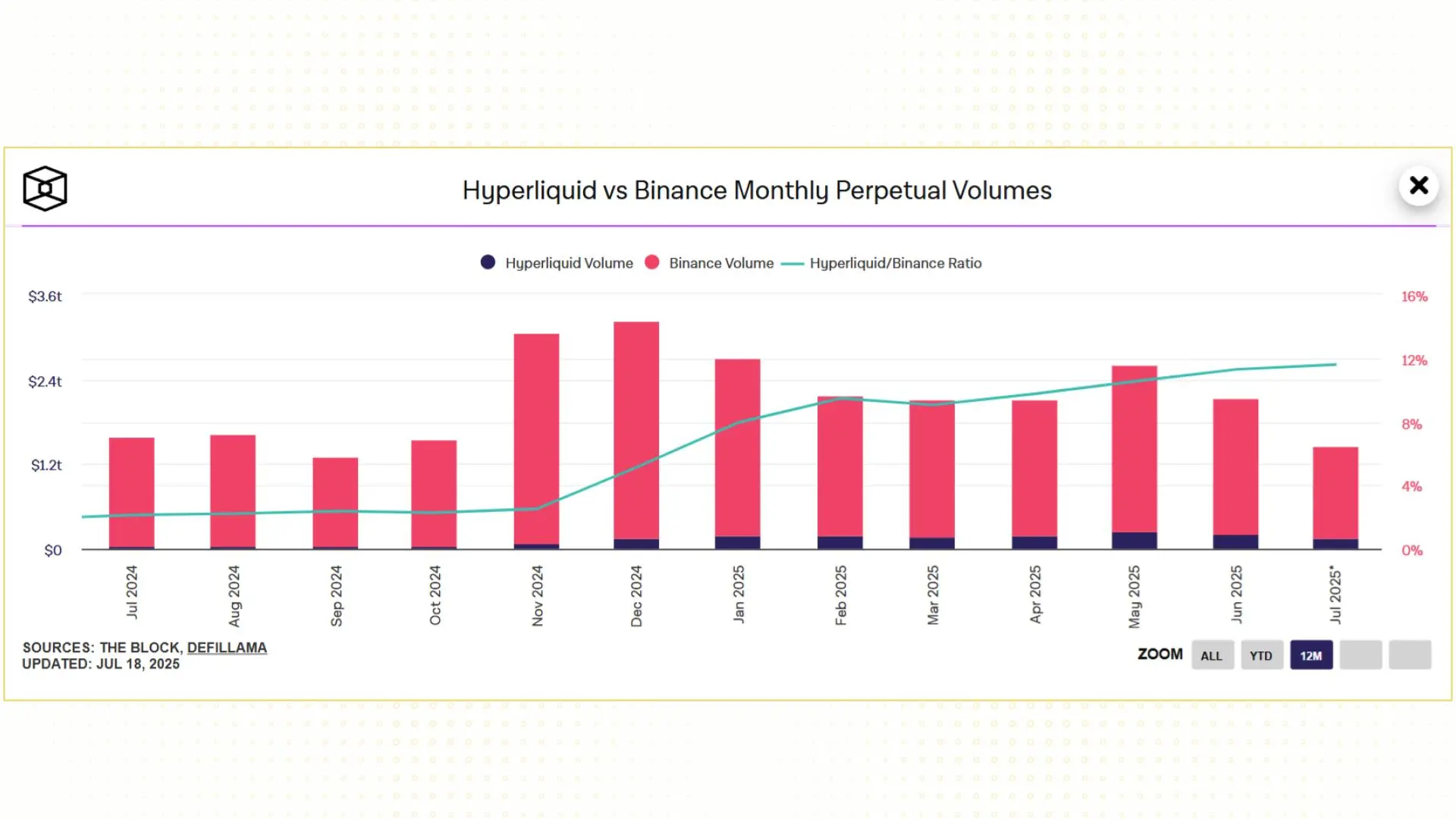
Hyperliquid emerged in 2023-2024, quickly becoming a destination for the meme coin community due to its fast listing of meme coin futures contracts and high leverage, attracting capital for "wave trading." Even before Hyperliquid had its smart contract (prior to the launch of HyperEVM), the platform already offered Hypurr Fun, allowing users to create custom tokens and Bonding Curves directly on-chain, although the bonding process was still handled off-chain.
Additionally, meme coins like TRUMP, JELLYJELLY, and PUMP have seen trading volumes on Hyperliquid surpass many centralized exchanges, creating a new "listing effect" that puts pressure on Binance to retain traders. Overall, Hyperliquid's monthly perpetual contract trading volume is steadily increasing, reaching $216 billion compared to Binance's $1.91 trillion (as of June 2025 data), representing a volume ratio of 12% between the two exchanges.
Perpetual volume on Hyperliquid is 12% of Binance's. Source: The Block
Facing this trend, Binance understands that "liquidity bleed" cannot be prevented. The solution presented by the exchange is its Binance Alpha product with Bonding Curve TGEs. This new product allows Binance to create a closed, four-tiered process: TGE → Alpha trading → Futures → Spot. Not all tokens will necessarily go through all tiers, but this process enables Binance to control the entire token lifecycle, from experimentation to maturity.
The integration of on-chain trading directly within Alpha allows users to remain within the Binance application rather than migrating to DEXes, thus retaining users within the CeFi (Centralized Finance) ecosystem with a DeFi-like experience. This can be seen as a step towards "DeFi-ification within CeFi" by Binance: offering rapid pump dynamics and frequent new token listings, but still maintaining centralized management, brand reputation, and risk warnings. This strategic move aims to combine the best of both worlds, catering to the evolving demands of crypto users and preserving Binance's market leadership.
Disclaimer
This article is for informational purposes only and should not be considered financial advice. Please do your own research before making investment decisions.

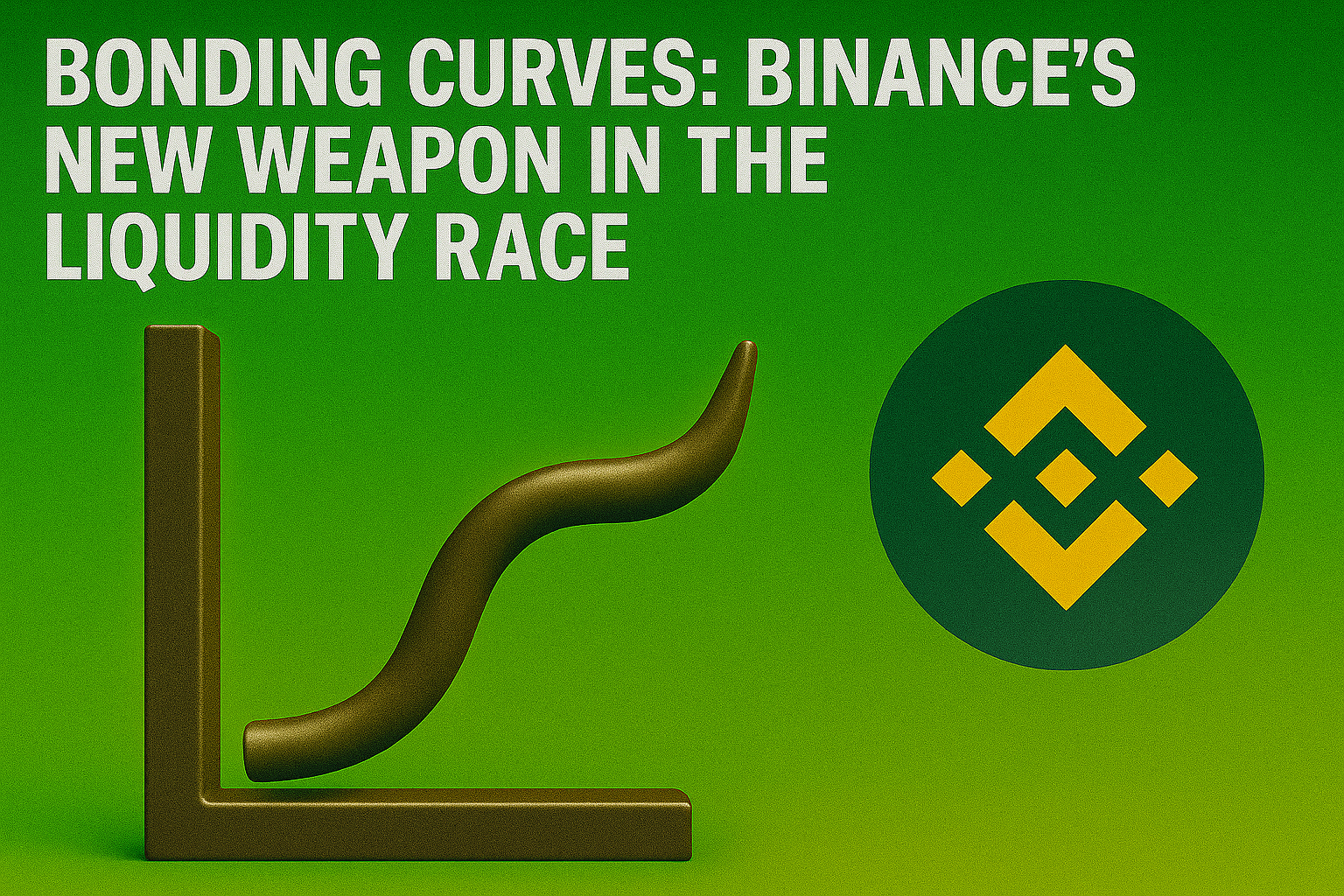
.png)



